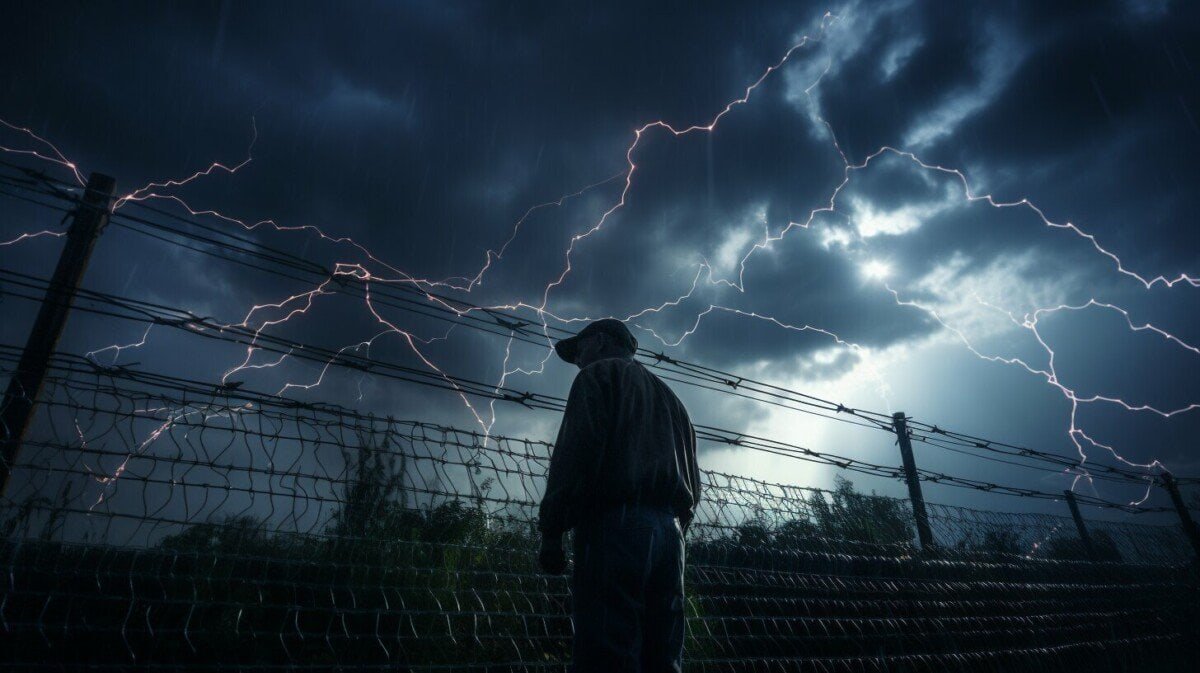Welcome to our expert guide on troubleshooting electric fences! If you own an electric fence, you know how important it is to keep it functioning properly to protect your property and livestock. However, electric fences can experience a range of problems that prevent them from working effectively. In this guide, we’ll explore some of the most common issues that electric fences can experience and provide you with expert solutions for troubleshooting them. Whether you’re dealing with an electric fence that’s not working at all or one that’s not delivering enough of a shock to deter animals or intruders, we’ve got you covered. Let’s get started!
Common Electric Fence Issues
Electric fences can encounter a range of problems that can affect their functionality. Here are some of the most common issues:
| Problem | Description |
|---|---|
| Broken Wires | Wires can break due to weather conditions or physical damage like animals leaning on the fence or human-made damage. A broken wire can quickly render the entire fence ineffective. |
| Bad Grounding | Grounding is essential for the proper functioning of electric fences. If the grounding is poor or damaged, the fence won’t be able to deliver enough voltage, leading to the fence being less effective or not working at all. |
| Inadequate Voltage | The voltage level should be high enough to deter intruders or animals from crossing the fence. If it’s too low, it may not be enough to deter them. |
| Charger Issues | The charger is the device that powers the fence, and if it’s not working correctly, the fence won’t work either. This can be due to power loss, damage, or old age. |
To fix these problems, you need first to identify the issue and then follow the appropriate troubleshooting solution. Next, we will delve deeper into each of these common issues and offer tips on how to resolve them.
Electric Fence Troubleshooting Guide
When troubleshooting an electric fence, it is important to follow a systematic approach to identify and resolve issues. Here is a step-by-step guide to help you troubleshoot your electric fence:
- Inspect the fence: Walk along the fence to check for any obvious issues such as broken wires or damaged insulators. This can help identify the location of the problem.
- Check the grounding: Proper grounding is essential for the proper function of an electric fence. Use a tester to check the grounding rods and connections to ensure that they are working correctly.
- Check the charger: One of the most common issues with electric fences is a faulty charger. Check the charger’s voltage output and ensure that it is within the manufacturer’s recommended range.
- Test the voltage: Use a voltage tester to check the voltage output of the fence. If the voltage is below the recommended level, it may indicate an issue with the charger, grounding, or wiring.
- Check the wiring: Inspect the wiring for any signs of damage or wear. If there are any broken wires, replace or repair them as needed.
- Ensure proper wire spacing: The wire spacing is essential for the fence to function correctly. Ensure that the wires are spaced correctly for the type of animal you are trying to contain or exclude.
- Perform regular maintenance: Regular maintenance is crucial to ensuring the longevity and effectiveness of an electric fence. Inspect the fence regularly for any issues and address them promptly.
- Consider upgrading: If you are experiencing ongoing issues with your electric fence, consider upgrading it to a newer, more reliable system.
By following these troubleshooting steps, you can identify and resolve common electric fence issues and keep your property secure. If you are unsure how to troubleshoot your electric fence, consider calling a professional to diagnose and fix any issues.
Checking the Charger
When troubleshooting an electric fence, one of the first things to check is the charger. The charger is responsible for delivering the voltage to the fence, and if it is not working correctly, the fence will not be effective in keeping animals or intruders out.
Begin by checking the power source for the charger. Make sure that it is plugged in and that the outlet is working correctly. If the outlet is not working, try plugging the charger into a different outlet to see if that resolves the issue.
If the power source is working correctly, check the charger itself for any visible signs of damage or wear. Look for frayed wires, loose connections, or corrosion, and repair or replace any damaged components as needed.
Next, check the output voltage of the charger. Use a voltmeter to measure the voltage output, and compare it to the manufacturer’s specifications. If the voltage is too low, it may be time to replace the charger.
Testing Voltage
Testing the voltage of your electric fence is important to ensure it is delivering a sufficient shock to deter animals or intruders. Here are the steps to follow when testing voltage:
- Turn off the charger and unplug it from the power source.
- Remove any weeds or vegetation that may be touching the fence, as this can reduce the voltage.
- Using a voltmeter, touch the probe to the fence wire and the ground probe to a grounding rod or nearby metal object.
- Take note of the reading on the voltmeter. A properly functioning electric fence should have a voltage reading of at least 2,000 volts.
If the voltage reading is below 2,000 volts, there may be an issue with the charger or grounding. Refer to the previous sections on checking the charger and grounding issues for troubleshooting steps.
It is recommended to test your electric fence’s voltage at least once a month to ensure it is functioning properly.
Grounding Issues
Proper grounding is essential to ensure that your electric fence functions effectively. If the fence is not properly grounded, voltage levels may become too high, causing potential safety risks for both people and animals. Here are some common grounding issues:
| Issue | Solution |
|---|---|
| Insufficient ground rods | Install additional ground rods to enhance the effectiveness of your fence. A minimum of three ground rods, each at least 6ft deep, is recommended. |
| Poor soil conductivity | Apply a conductive material such as agricultural limestone or calcium carbonate to improve soil conductivity around the grounding system. |
| Corroded grounding equipment | Inspect your grounding equipment regularly and replace any corroded or damaged components. |
Remember: Proper grounding is key to maintaining the safety and effectiveness of your electric fence. Neglecting to address grounding issues can lead to damage to your fence and potential safety hazards.
Dealing with Broken Wires
If your electric fence is not working properly, broken wires may be the culprit. Broken wires can occur due to a variety of reasons, such as weather conditions, animal interference, or even accidental damage from machinery.
Identifying broken wires can be challenging, as they may not be immediately visible to the eye. One way to check for broken wires is to use a voltage meter to test the voltage at various points along the fence. If you notice a drop in voltage at a certain point, it may indicate a broken wire.
Once you have identified the location of the broken wire, the next step is to fix it. This can be done by splicing the broken wire back together or replacing it entirely. It’s important to use the correct type of wire and connectors to ensure a proper connection and reduce the risk of future breakage.
Regular maintenance and inspection of your electric fence can help prevent broken wires from occurring in the first place. Inspect your fence regularly for any signs of wear and tear, and address any issues promptly to prevent further damage.
Fence Maintenance Tips
Maintenance is key to ensure the longevity and effectiveness of your electric fence. Regular inspection and prompt problem resolution can save you time and money in the long run. Here are some useful tips for maintaining your electric fence:
- Inspect your fence regularly. Check for signs of wear and tear, broken wires, and loose connections.
- Clear any vegetation or debris that may be touching your fence. This can cause a short circuit and reduce the effectiveness of your fence.
- Clean your fence charger regularly. Dust and debris can accumulate on the charger, reducing its effectiveness.
- Test the voltage of your fence regularly. This will help you identify any issues and address them promptly.
- Make sure your fence charger is protected from the elements. Exposure to rain and snow can damage the charger and reduce its effectiveness.
- Replace any damaged or worn out components promptly. This may include wires, insulators, or other parts of your fence.
By following these tips, you can ensure that your electric fence remains effective in keeping your property secure. Remember, regular maintenance is key to maximizing the lifespan and effectiveness of your electric fence.
Upgrading Your Electric Fence
If you are experiencing persistent issues with your electric fence, upgrading it may be the best solution. Here are some options to consider:
| Upgrade Option | Description |
|---|---|
| Add more wires | Adding more wires to your electric fence can increase the shock delivered to animals and intruders, making it more effective. |
| Upgrade the charger | A more powerful charger can increase the voltage delivered to the fence, making it more effective in deterring animals and intruders. |
| Install lightning protection | If lightning strikes your electric fence, it can damage the charger and other components. Installing lightning protection can help prevent this and improve the longevity of your fence. |
| Upgrade insulators | If your electric fence is experiencing grounding issues, upgrading the insulators can help prevent the electricity from escaping the fence. |
Consider consulting with an experienced electric fence contractor to evaluate your specific needs and determine the best upgrade options for your fence.
When to Call a Professional
While many electric fence issues can be resolved with some basic troubleshooting and maintenance, there may be times when it is necessary to call in a professional. Here are some situations where you should consider contacting an expert:
- If you are unsure about how to diagnose and fix an electric fence issue
- If you have tried troubleshooting on your own and the problem persists
- If you suspect that the issue is related to the charger or other electrical components
- If you are experiencing multiple issues with your electric fence
When selecting an electric fence contractor, be sure to choose someone with experience and a good reputation. Look for references and reviews from past clients, as well as proof of insurance and licensing. A qualified professional can help ensure that your electric fence is repaired quickly and properly, keeping your property secure.
Electric Fence Troubleshooting FAQ
Here are answers to some of the most common questions about troubleshooting electric fences:
How do I test the voltage of my electric fence?
To test the voltage of your electric fence, you will need a voltmeter. First, turn off the power to the fence. Then, connect the voltmeter to the fence and turn the power back on. The voltmeter should read between 4,000 and 8,000 volts for most electric fences.
What should I do if my electric fence is not delivering enough of a shock?
If your electric fence is not delivering enough of a shock, the first thing to check is the voltage. If the voltage is too low, you may need to adjust the charger or add more grounding rods. You should also check for broken wires or poor connections, as these can also prevent the fence from delivering a sufficient shock.
Why is my electric fence not working at all?
There are several reasons why an electric fence may not be working at all. First, check that the charger is working properly and delivering enough voltage to the fence. You should also check for broken wires or poor connections, which can prevent the fence from working. Finally, make sure the grounding system is adequate, as a poor grounding system can also prevent the fence from working.
What should I do if I can’t find the source of the problem?
If you can’t find the source of the problem, it may be time to call in a professional electric fence contractor. They will have the expertise and equipment needed to identify and fix complex issues with your electric fence.
Conclusion
Electric fences are an effective means of keeping your property secure, but they can encounter issues that prevent them from working properly. In this guide, we have provided an overview of some of the most common electric fence problems, as well as tips for troubleshooting and resolving these issues.
Regular maintenance and inspection of your electric fence are crucial in ensuring its longevity and effectiveness. By identifying and addressing issues promptly, you can avoid potential security breaches and keep your property safe. Remember to always prioritize safety when working with electric fences, and consider contacting a professional if you are uncertain about any aspect of troubleshooting or repair.



